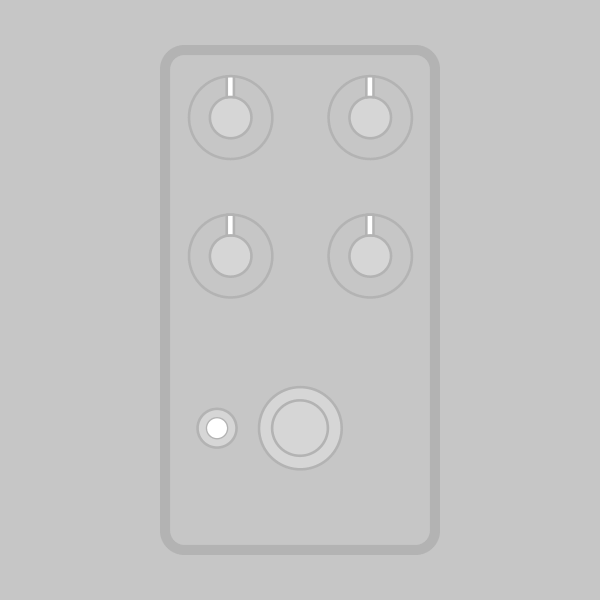
The Octagon Octave Fuzz is based on the Tycobrahe® Octavia, a transformer-based octave fuzz pedal originally released in 1973.
The circuit itself was designed by Roger Mayer for Jimi Hendrix and dates back to 1967. He designed somewhere between 15 and 20 iterations for Jimi between ’67 and 1969, some of which only lasted a week before being tweaked again. The Octavia was never sold commercially, so there was no final or standard version of the circuit, but units were made for several other guitarists such as Syd Barrett and Peter Frampton.
One of these units was sent to the Tycobrahe Sound Company in California for repair. (Accounts vary as to whose unit it was, but it wasn’t Jimi’s.) They traced out the circuit and later released a commercial pedal in 1973, also called the Octavia since Roger had only used the name informally and never commercially. It was accompanied by a wide advertising campaign, but it ceased production sometime around 1976. According to Roger, the specific unit Tycobrahe copied was intended for 24V operation, but they dropped the power supply 9V without scaling any of the values, so the transistors are biased improperly.
Roger Mayer was never satisfied with any of the transformer versions and by 1970 he had redesigned the circuit to use all silicon transistors with no transformer. Jimi did play one of these new versions before his passing, but it has not been linked with any actual recordings and may have just been for evaluation and feedback. Roger has produced versions of the transistor Octavia ever since, but has never reissued the transformer version because he felt it was inferior.
Because of this, the transformer Octavia is more closely associated with Tycobrahe, and the transistor Octavia is called the “Roger Mayer version” even though he invented both. But since the transformer version was almost the only version Jimi ever played, it still lives on as its own circuit in the pantheon of early guitar effects.
All in all, it’s a complicated history that has caused a lot of confusion in the past fifty years. The two Octavias don’t have much in common and don’t sound alike, but both are worth building if you like octave fuzz. The transistor Octavia is available as our Octahedron project.
The Octagon is a direct adaptation of the Tycobrahe circuit, with the only addition being a toggle switch that disables the octave for a more traditional fuzz effect.